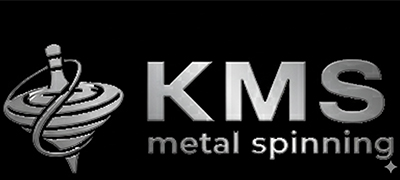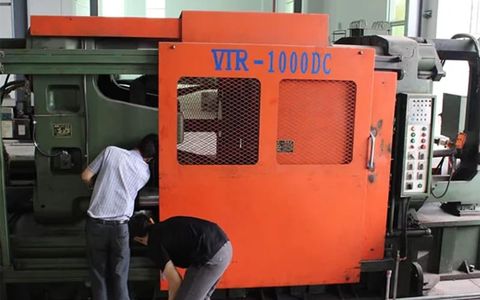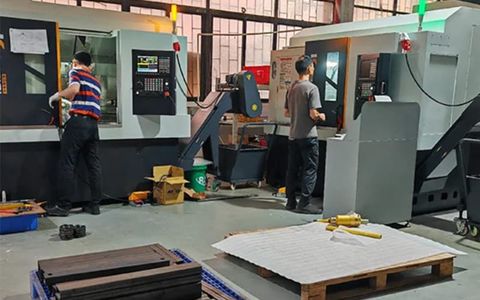Advantages of Metal Spinning
Metal spinning, or metal turning, offers several advantages over other metal fabrication methods.
Advantages of Metal Spinning
Metal spinning, or metal turning, offers several advantages over other metal fabrication methods. From cost-effectiveness and greater flexibility in design to speedy turnaround times and production of seamless parts, metal spinning provides the ideal solution for many manufacturing needs. Let’s explore these advantages in greater detail.
Cost-effectiveness and Affordability
Metal spinning is known for its cost-effectiveness and affordability, making it a popular choice for mass production of metal parts. It requires inexpensive tooling compared to other metal fabrication processes such as metal stamping or casting, resulting in significant cost savings. Additionally, the spinning process enables the production of custom metal parts with minimal setup, allowing for mass production at a low cost.
Flexibility in Design and Production
Metal spinning stands out in the manufacturing world for its unparalleled flexibility in both design and production. This process allows for an extraordinary range of shapes and sizes, from small, intricate components to large, complex structures. The adaptability of metal spinning means that it can accommodate a variety of metals, including aluminum, stainless steel, copper, and mild steel, catering to different design needs.
One of the most significant benefits of metal spinning is its ability to produce both bespoke, one-off pieces and large-scale production runs with the same level of precision and efficiency. This flexibility is especially beneficial for industries that require custom solutions. The agility of metal spinning ensures that design alterations can be made quickly and cost-effectively, without the need for expensive molds or tooling changes, making it the perfect choice for small production runs. What’s more, metal spinning is a suitable option for both low- and high-volume orders.
Speedy Turnaround Times and Adjustable Order Sizes
Metal spinning offers speedy turnaround times and adjustable order sizes, making it an ideal choice for industries that require quick production and flexibility. The spinning process is efficient and requires minimal setup, allowing for faster production compared to other metal fabrication methods. This means that orders can be fulfilled in a shorter time frame, reducing lead times and increasing overall productivity. With short lead times, small to medium batch quantities can be produced within a matter of days, making metal spinning a highly efficient and time-saving option for businesses.
Additionally, metal spinning allows for adjustable order sizes, making it suitable for both small-scale and large-scale production runs. Whether you need a few custom pieces or thousands of parts, metal spinning can accommodate your requirements without compromising on quality or cost-effectiveness. This adjustability makes metal spinning a versatile solution for various industries, such as automotive, aerospace, lighting, and architectural applications. Plus, the spinning equipment leaves the final product with a smooth finish, reducing the need for extra tooling post-production and allowing for speedy turnaround times.
Production of Seamless and Symmetrical Parts
One of the key advantages of metal spinning is its ability to produce seamless and symmetrical parts. The spinning process involves rotating a flat sheet of metal on a lathe while applying force to shape it around a rotating mandrel or form tool. This results in parts that have smooth, continuous surfaces without any visible seams or joints.
This seamless quality is particularly important for industries that require high precision and aesthetics, such as automotive, aerospace, and architectural applications. Metal spun parts can maintain their structural integrity while achieving intricate designs and complex shapes, thanks to the unique grain structure of the metal. This makes them highly sought after for components like decorative lighting fixtures, reflectors, and decorative architectural elements that require consistency in their shape and size.
Environmentally Friendly
In addition to its practical benefits, metal spinning also offers environmental advantages. Unlike other metal fabrication methods that generate significant waste and utilize excessive energy, metal spinning is a more sustainable option.
The minimal setup and efficient production process of metal spinning contribute to its eco-friendliness. With reduced material waste and shorter lead times, there is less resource consumption overall. This not only helps in conserving valuable materials but also reduces the carbon footprint associated with manufacturing.
Furthermore, the nature of metal spinning allows for the use of recycled materials. Scrap metal can be easily melted down and formed into new parts, minimizing the need for raw materials extraction. This recycling aspect of metal spinning aligns with the growing trend towards a circular economy, making it a desirable choice for businesses looking to reduce their environmental impact.


 English
English
 Deutsch
Deutsch
 العربيّة
العربيّة



